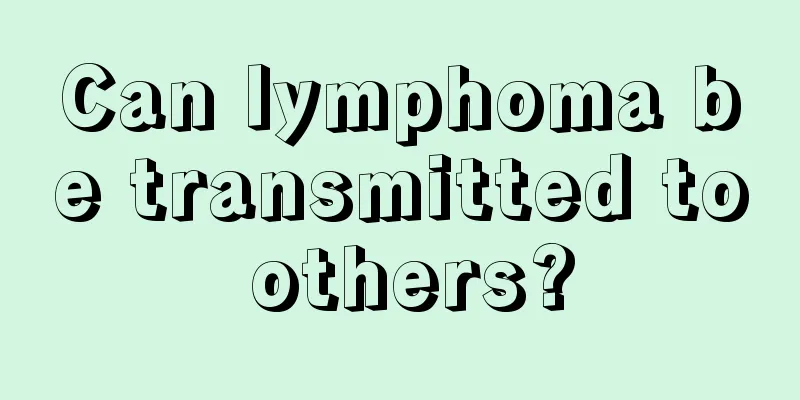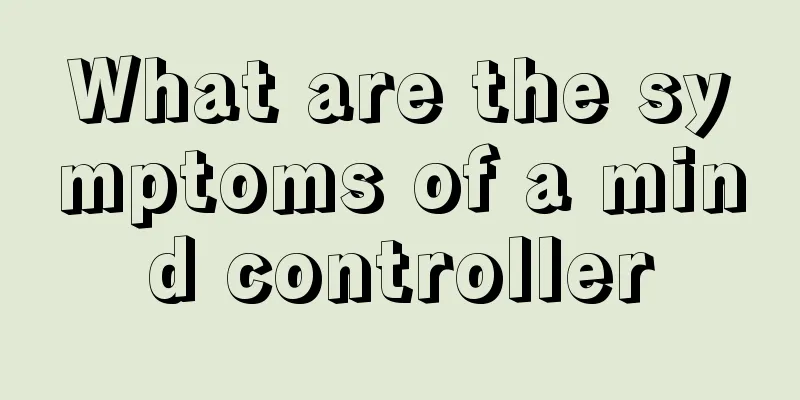What should I do if viral encephalitis is serious? Find the cause of the disease and treat it

|
Viral encephalitis is a very serious malignant disease. Patients usually have an acute onset, and in severe cases it can directly endanger their lives. Therefore, it is very important to know more about the causes and clinical manifestations of this malignant disease in daily life, so as to do preventive work in advance and carry out scientific and effective treatment methods in a timely manner. 1. Causes Most of the diseases are enterovirus infections, including poliovirus, Coxsackievirus A and B, echovirus, etc., which occur in epidemic or sporadic cases and are mainly transmitted through the fecal-oral route, and a few are transmitted through respiratory secretions. The next most common infections are mumps virus, herpes virus and adenovirus. Mumps virus is common in winter and spring and is usually self-limiting. Herpes viruses include herpes simplex virus, Epstein-Barr virus, cytomegalovirus and varicella-zoster virus. Arboviruses are a class of viruses that are preserved in nature by being transmitted between vertebrate and hemophagous arthropod hosts. They are distributed in multiple virus families, and at least 80 species can cause human diseases. 2. Clinical manifestations of viral meningitis The onset is usually acute, with severe headache, fever, vomiting, neck stiffness, typical signs of meningeal irritation such as positive Kernig sign, as well as general discomfort, sore throat, photophobia, dizziness, mental fatigue, paresthesia, myalgia, abdominal pain and chills. Some patients may experience symptoms such as pharyngitis and blurred vision. Enterovirus infection may cause a rash, which usually occurs at the same time as fever and lasts for 4 to 10 days. In infections with Coxsackie viruses A5, 9, 16 and ECHO4, 6, 9, 16, 30, typical skin lesions are maculopapular rashes, which may be limited to the face, trunk or involve the limbs, including the palms and soles of the feet. Coxsackie B virus infection may cause epidemic myalgia (chest pain) and myocarditis. Clinical symptoms of neurological damage are rare, and strabismus, diplopia, sensory impairment, ataxia, asymmetric tendon reflexes and positive pathological reflexes are occasionally found. In severe cases, symptoms of neurological damage such as drowsiness may occur. 3. Viral meningitis examination Peripheral blood leukocyte count and classification test, cerebrospinal fluid examination, brain CT examination, brain MRI examination, and electroencephalogram examination. 1. Peripheral blood leukocyte count and classification test The white blood cell count is normal, decreased, or slightly increased; the lymphocyte ratio is increased, often with atypical lymphocytes. 2. Cerebrospinal fluid examination The cerebrospinal fluid is colorless and transparent, with normal or increased pressure and a slightly increased cell count, which can reach (10-1000)×109/L. Polymorphonuclear cells are the main cells in the early stage, and lymphocytes are the main cells after 8-48 hours. The sugar and chloride content are normal, the protein is slightly increased, and no bacteria are found in smears and cultures. 3. Virological examination Some patients had positive cerebrospinal fluid viral nucleic acid tests, positive viral culture and specific antibody tests, and the recovery period serum specific antibody titer was more than 4 times higher than that in the acute period, which has diagnostic value. 4. Imaging examination Brain CT or MRI is usually unremarkable. 5. Electroencephalogram It can only indicate abnormal brain function but cannot confirm the nature of the viral infection. It is characterized by diffuse or localized abnormal slow wave background activity, occasionally accompanied by spike waves or spike-slow wave complexes. The EEG may also be normal in some patients. 4. Diagnosis of viral meningitis The diagnosis of this disease is mainly based on the symptoms of acute onset of systemic infection and poisoning, meningeal irritation signs, and mild to moderate increase in CSF lymphocytes, excluding other diseases. Confirmation requires CSF etiological examination. 5. Treatment of viral meningitis The main treatments are symptomatic treatment, supportive treatment and prevention of complications. For symptomatic treatment, such as severe headache, analgesics can be used, and mannitol can be used appropriately for cerebral edema. Antiviral treatment can significantly shorten the course of the disease and relieve symptoms. Acyclovir is often used for herpes simplex virus and Epstein-Barr virus, three times a day. Ganciclovir is the drug of choice for CMV meningitis, given twice a day. 6. Prognosis of viral meningitis The course of the disease is benign, usually within 2 weeks, generally not more than 3 weeks, it is self-limited, the prognosis is good, and there are usually no complications. 7. Prevention of viral meningitis 1. General measures Exercise more often to improve disease resistance and prevent colds and intestinal infections; 2. Vaccination Get vaccinated against measles, rubella, mumps, etc. on time; kill and prevent mosquitoes, and get vaccinated against Japanese encephalitis. |
<<: To relieve gout, these tips are the most practical!
>>: What diseases does itchy ears indicate?
Recommend
Can I eat mangoes when I have a fever? Are there any taboos?
Mango is a tropical fruit with moist and hot prop...
What to do if the skin on your palms is rough
When winter comes, my palms become extremely roug...
Is sweating good for the body?
In the hot summer, people will sweat profusely as...
What medicine to take for early stage nasopharyngeal cancer
What medicine should I take for early-stage nasop...
How to make spare ribs tender quickly
Spare ribs are a common food that is basically lo...
How long can one live with thyroid cancer? How to use medication for thyroid cancer
The specific survival period of thyroid cancer pa...
What is the diagnostic order of small cell lung cancer
What is the diagnostic sequence of small cell lun...
Mycoplasma pneumonia has these symptoms
Mycoplasma pneumonia is a common viral disease th...
What should I do if my white watch strap is dirty?
Watches are a kind of jewelry that people love ve...
Who can't eat ice grass
Ice grass is an edible vegetable, not a wild plan...
Pimples appear on the bridge of my nose where the glasses are
The bridge of the nose is a part of the body that...
How to treat tinnitus and blockage in the ears?
People will encounter a lot of unexpected events ...
Tips to self-test whether you have damp-heat constitution
If you have a damp-heat constitution, your body w...
What to do if a bug crawls into your ear
Insects can be seen everywhere, especially in pla...
Can I take Chinese medicine during my menstrual period?
Menstruation can be said to be an old friend that...









